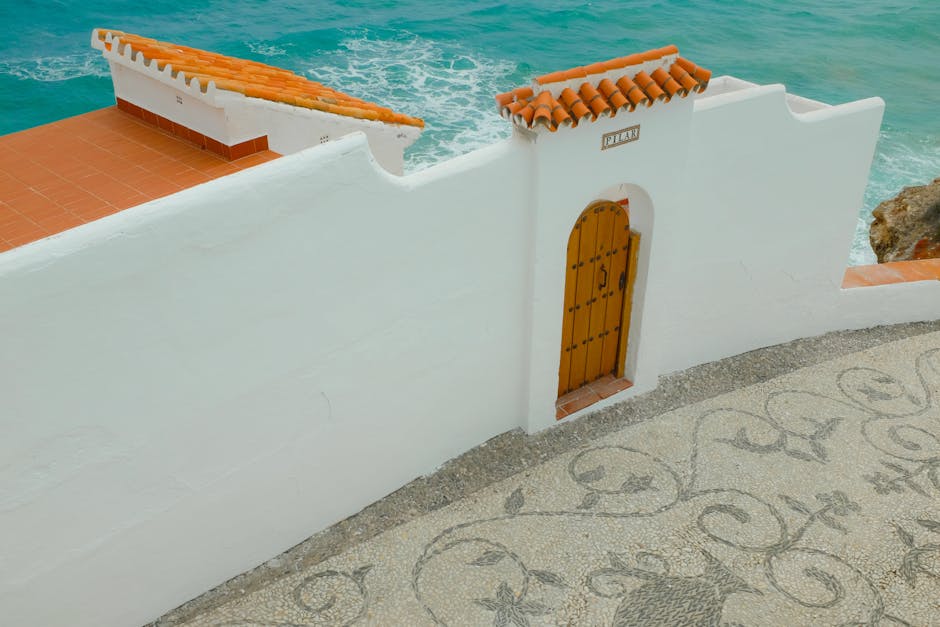
Spain offers more than just the sun-kissed beaches of Barcelona or the historic allure of Madrid. It is a country dotted with hidden gems waiting to be explored by the discerning traveler. As we navigate through 2025, these exceptional locations come alive with an added dimension: award-winning website design trends that enhance our exploration. Dive into these lesser-known treasures and discover how digital innovation is transforming the travel experience in Spain.
Exploring Alongside Digital Innovation
The integration of cutting-edge website design with travel experiences is reshaping how we discover Spain. Award-winning trends focus on user experience, mobile responsiveness, and immersive storytelling, making it easier than ever to find hidden gems. As you plan your journey, imagine seamlessly toggling between reality and digital guidance, enriching every aspect of your Spanish adventure.
The Enchanting Villages of Andalusia
Andalusia, known for its dramatic landscapes and rich cultural heritage, is home to several hidden gems that beautifully blend tradition with modernity. The use of augmented reality on regional tourism websites allows travelers to preview these villages before their visit.
- Setenil de las Bodegas: Famous for its unique cave houses built into cliffs, this village captures attention both physically and digitally. Interactive websites offer virtual tours and historical insights.
- Zuheros: A picturesque village surrounded by limestone mountains. Websites with 360-degree panoramas highlight its castle and olive oil museums, encouraging deeper cultural engagement.
Basque Country’s Undiscovered Coastlines
Less frequented than their Southern counterparts, the beaches and coastal towns of Basque Country are perfect for those seeking tranquility. Enhanced web interfaces for local tourism can guide you through the hidden paths and local eateries.
- Zarautz: Known for its long sandy beaches and surfing culture, virtual reality tools on the tourism website allow you to experience the waves before you arrive.
- Getaria: This charming fishing village offers not just pristine beaches but also rich gastronomic experiences. Interactive menus and chef interviews online offer a taste of what’s to come.
The Mystical Landscapes of Asturias
Asturias, with its lush landscapes and rugged coastlines, remains a closely guarded secret. The latest in web design simplifies the exploration of these natural wonders, merging maps and guided tours with intuitive interfaces.
- Somiedo Natural Park: A haven for nature enthusiasts, the park now features enhanced drone footage and wildlife tracking via the regional tourism site.
- Cudillero: A colorful port town whose charm is captured through cinematic video content available on its official website, giving a lively preview of its vibrant harbor scenes.
Discover the Quiet Corners of Catalonia
While Barcelona draws the crowds, Catalonia’s quieter spots are gaining attention through innovative digital storytelling. Augmented reality apps and websites highlight local folklore and artisanal crafts in these areas.
- Besalú: A medieval town where time seems to stand still. Virtual reality apps offer historical re-enactments, deepening your understanding of its ancient architecture.
- Siurana: Perched on a cliff with panoramic views, its digital presence is as breathtaking as its scenery, featuring aerial tours and climbing route guides.
Embracing Spanish Culture Through Digital Platforms
In 2025, the intersection of technology and travel extends to cultural immersion. Websites offering language resources, cooking classes, and dance tutorials help travelers connect with Spain’s vibrant culture in a meaningful way.
- Interactive Language Classes: Many regional sites now offer basic Spanish lessons integrated with cultural contexts, enhancing interactions with locals.
- Cooking Experiences: Online culinary classes hosted by local chefs allow travelers to experience Spanish cuisine before setting foot in the country.
FAQ
Q: What are some of the latest web design trends in travel for 2025?
A: Current trends include immersive virtual tours, augmented reality applications for enhanced exploration, and interactive storytelling that combines rich media with user-friendly navigation.
Q: How can technology enhance my travel experience in Spain?
A: Technology provides interactive guides, virtual reality tours, and online cultural resources, allowing for deeper engagement with the destinations you visit.
Q: Are these digital tools accessible to all travelers?
A: Yes, many of these tools are designed to be accessible, with multi-language support and intuitive interfaces, ensuring that travelers worldwide can benefit.
Q: How do virtual tours work?
A: Virtual tours are often available on official tourism websites, using panoramic photography or video to provide a 360-degree view of attractions, allowing you to explore destinations remotely.
Conclusion
Spain’s hidden travel gems offer more than scenic beauty and cultural depth; they present an opportunity to experience the cutting edge of digital innovation in travel. As you explore the enchanting villages, undiscovered coastlines, and mystical landscapes, the integration of modern web design trends enhances your journey, making it more immersive and informative. Whether you’re immersing yourself in local customs online or exploring remote corners through virtual tours, the merging of technology with travel in Spain promises an enriched and unforgettable experience in 2025.


